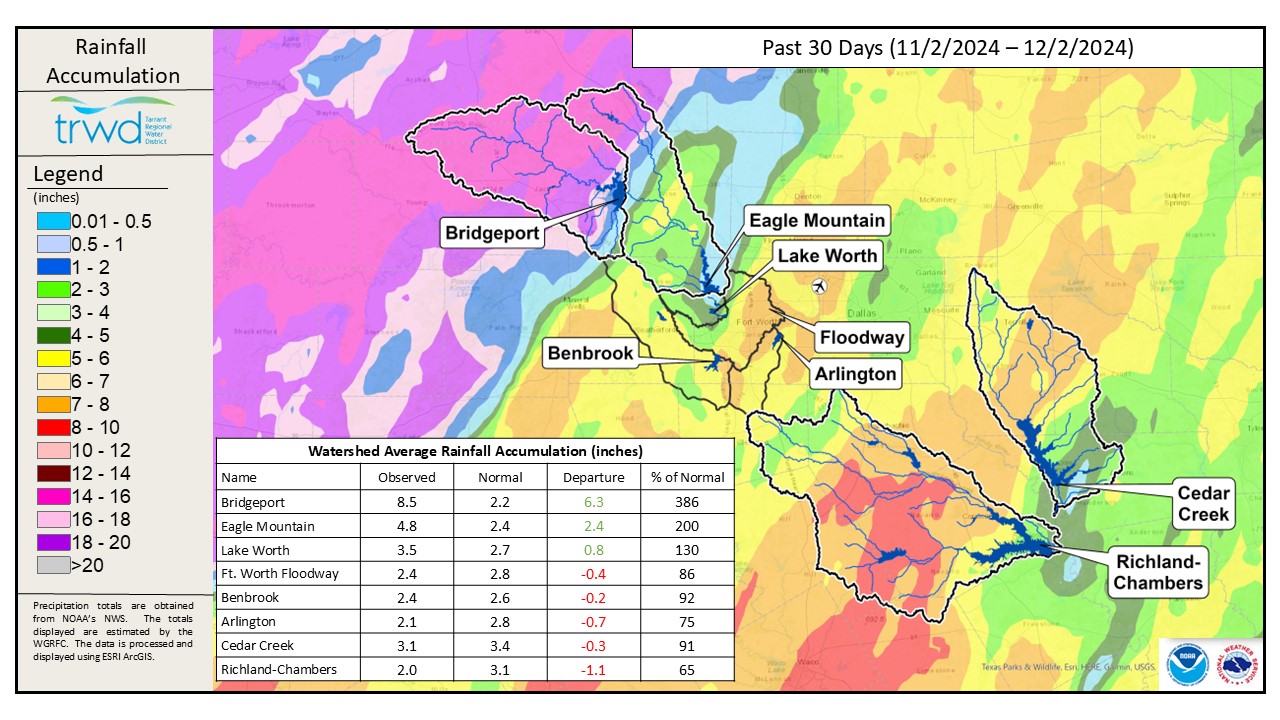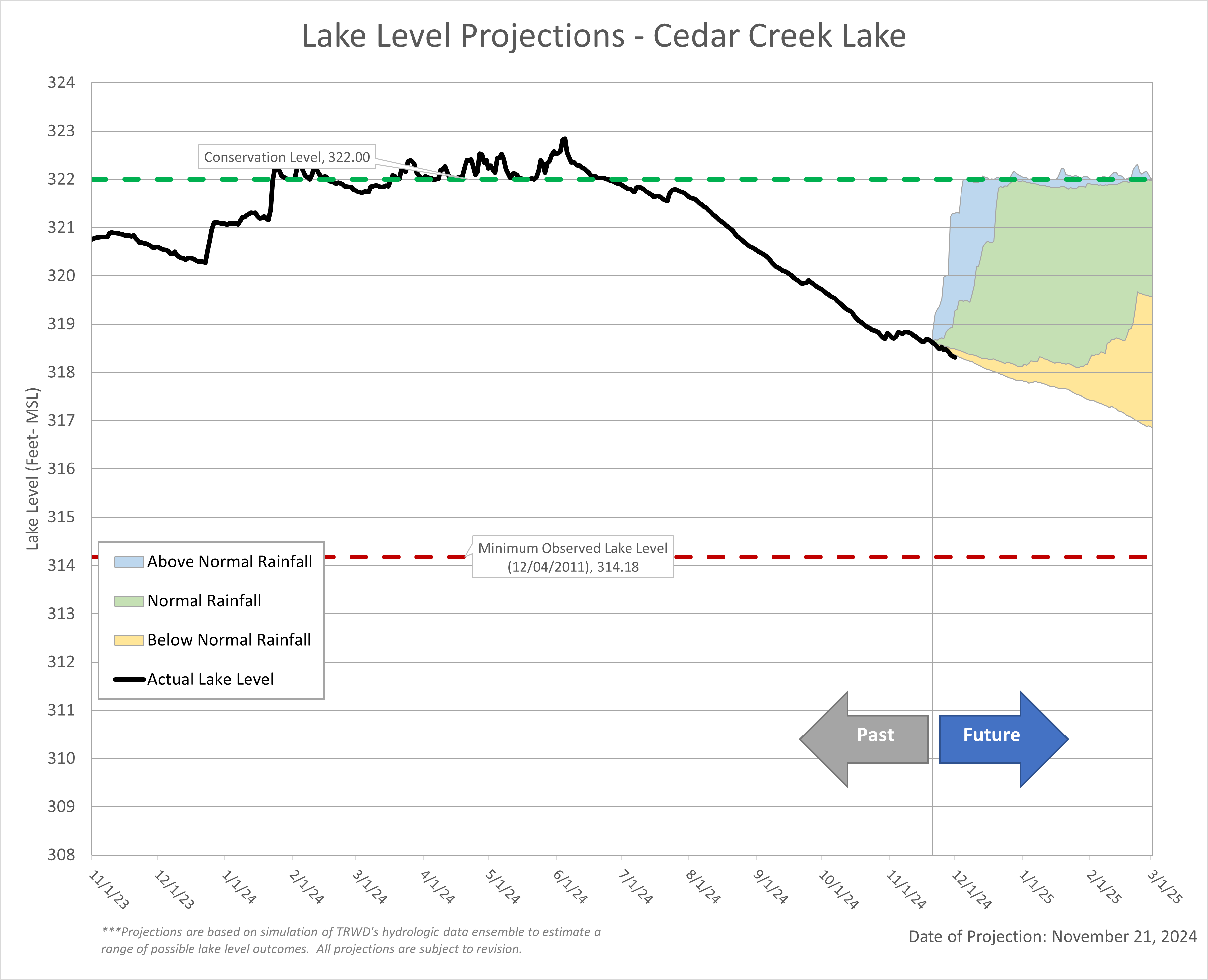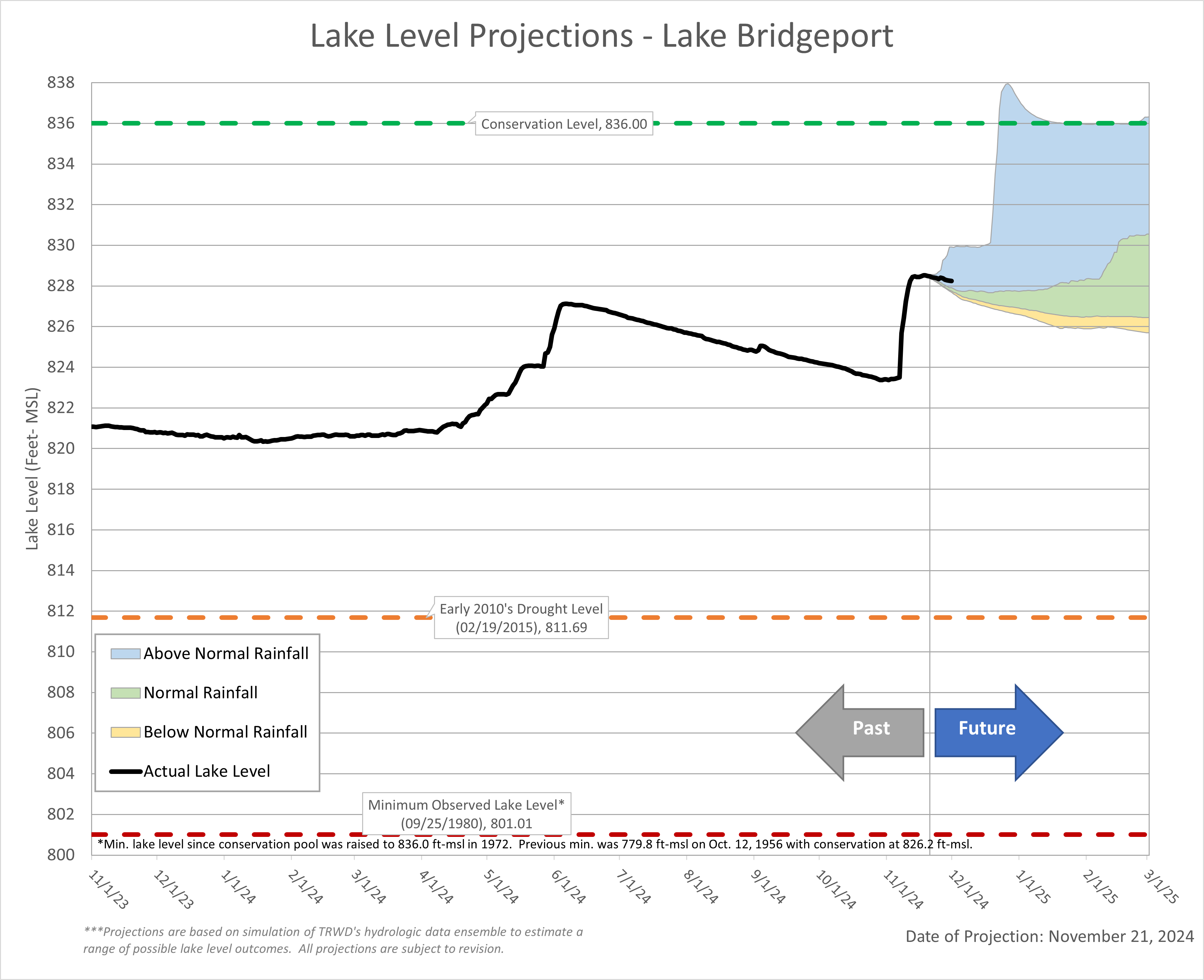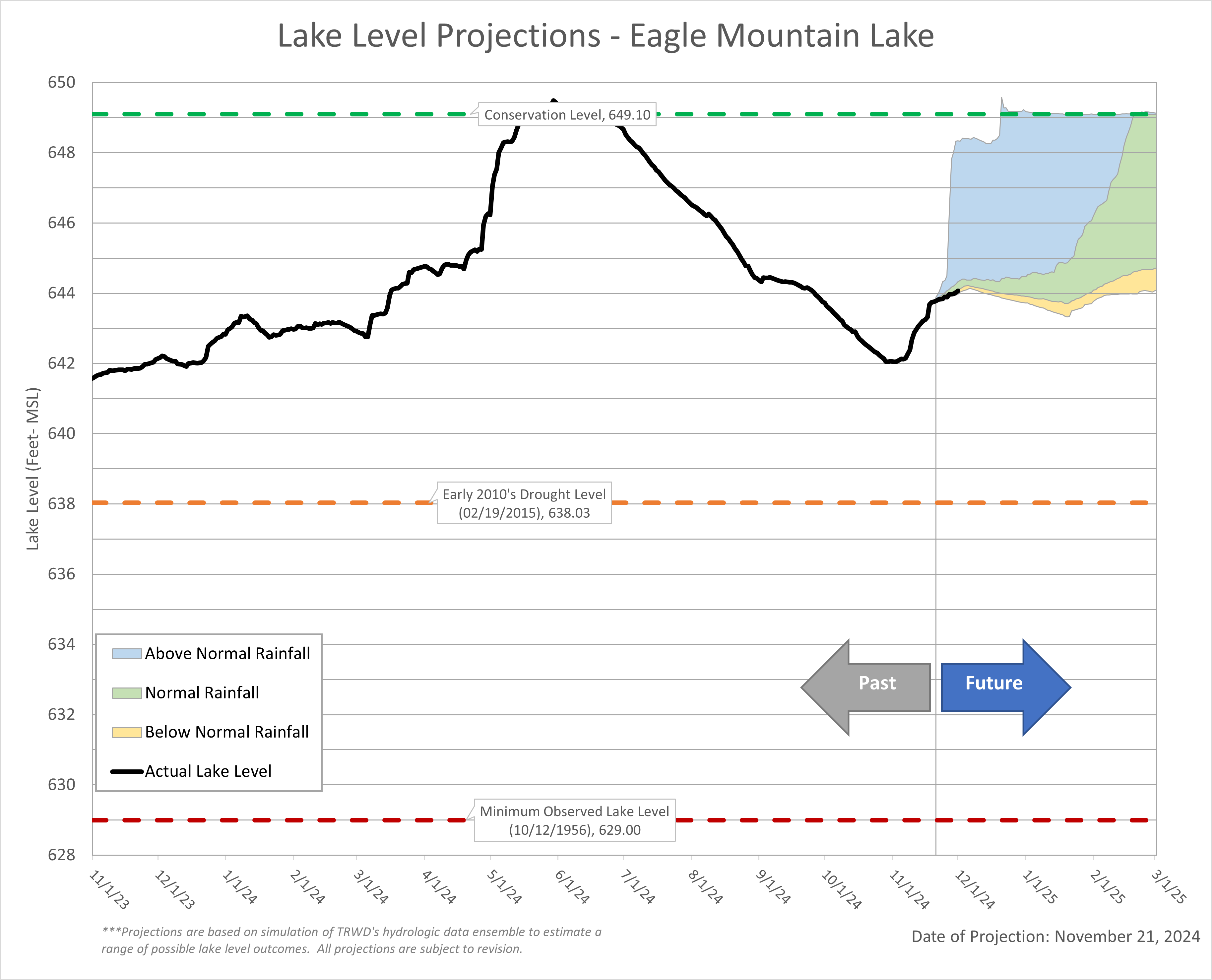November was a good month for TRWD’s System Storage, especially for the West Fork System. Rainfall in the northwest portion of the TRWD service area increased the combined storage of Bridgeport and Eagle Mountain by 10% . TRWD’s Meteorologist, Courtney Jalbert, provides information on what we can expect in terms of rainfall and temperatures going into the next couple of months and their impacts to lake levels in the “From our Meteorologist” section.
The latest lake level projections are shown below. You will also find:
- Links to historical lake level plots
- Last month’s projections compared to what actually happened
Thank you for following the Lake Level Blog and check back next month for more projections.
From our Meteorologist
November Summary…
Overall, November ended as warmer and drier than average for most of North Texas, but some of TRWD’s reservoirs did see a much-needed boost in rain since November 1st. DFW has recorded temperatures 6.7˚ above average and 0.56” below normal rainfall. However, the Bridgeport and Eagle Mountain watersheds received considerably more rain than normal as shown in the 30-Day Rainfall Totals map.
30-Day Rainfall Totals

Drought intensity remained the same for most regions in North Texas with the exception of the Upper West Fork region. Wise county went from D2, Severe Drought, to D0, Abnormally Dry and no drought for the far northwestern corner due to the plentiful rains in that region as seen on the local drought intensity map
TRWD Lake Rainfall Totals through December 2, 2024

Looking ahead…
Models are indicating equal chances of rain for December as seen on the 1-Month Rainfall Outlook, even though above normal rainfall is expected in the early part of the month. Temperatures are expected to be above normal for December according to the Climate Prediction Center on the 1-Month Temperature Outlook.
The trend of warmer and drier is expected to continue through the winter months as seen in the latest climate models for the December-January-February Temperature Outlook and the December-January-February Precipitation Outlook. The below normal precipitation and above normal temperatures across the Central to Southern Great Plains are partly due to the models indicating the Pacific ENSO neutral conditions transitioning to La Niña and lasting through the January to March 2025 time frame.
Projections
Lake Bridgeport
Eagle Mountain Lake
Cedar Creek Lake

Richland-Chambers Lake





